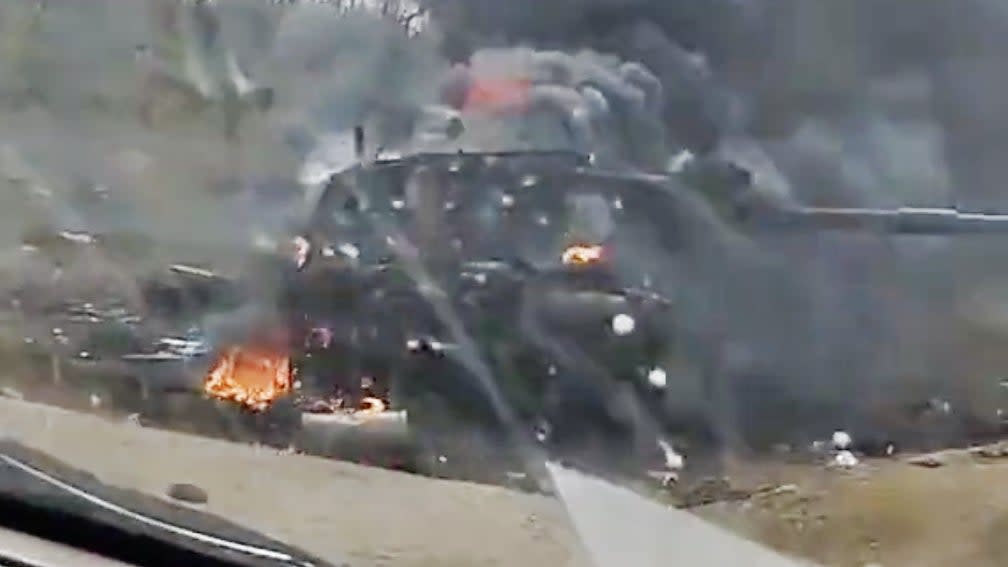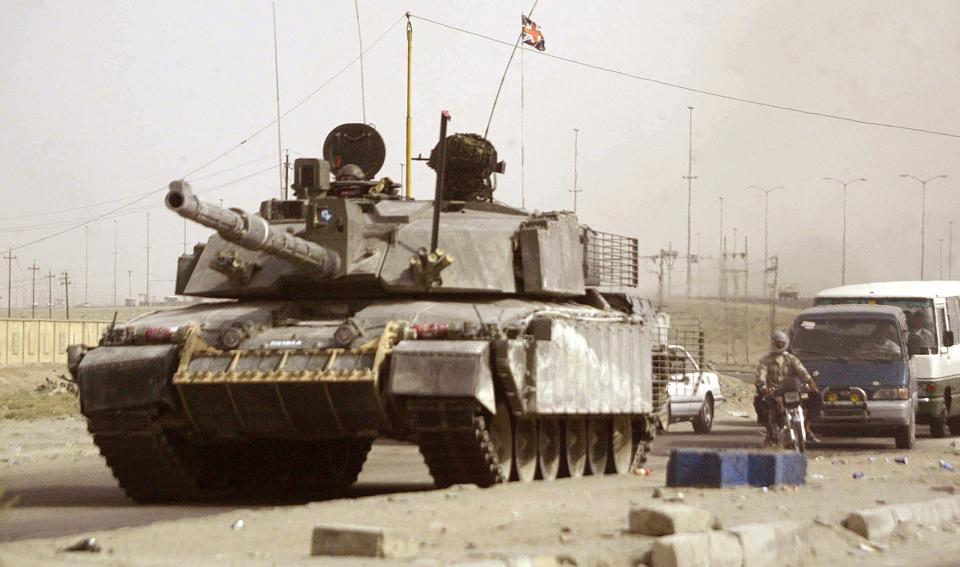Ukraine Has Lost Its First Challenger 2 Tank In Combat

Previously undefeated in combat — as far as we know — a British-made Challenger 2 main battle tank has been knocked out for the first time, in Ukrainian hands. Most importantly, however, all four crew are said to have survived the incident.
The Challenger 2 has played an important role in opening the door to more advanced Western tanks being donated to Ukraine, but with only 14 of these advanced British tanks delivered to Kyiv, the loss of even one will be felt hard. The fact that its crew emerged unscathed will surely help temper that.
https://twitter.com/UAWeapons/status/1698955326496592140?s=20
A video that began to do the rounds on social media yesterday shows a Ukrainian Challenger 2 burning on the side of a road, reportedly somewhere near Robotyne, in the Zaporizhzhia Oblast of southern Ukraine. The operating unit is said to be the 82nd Air Assault Brigade, which is understood to be the sole recipient of these particular tanks.
As for Robotyne, Ukrainian troops first entered this strategic town last month, in a small but important step in the push southward toward Melitopol, which, as we explained in December, is a key objective that must be overcome or bypassed in any effort to liberate Crimea or at least cut off the Russian land bridge to the occupied peninsula.
BBC Defense Correspondent Jonathan Beale has said that an unnamed Western defense source confirmed to him that all the crew of the Challenger 2 survived but also described the video as showing a “damaged” tank, which appears to be an understatement, at least.
https://twitter.com/bealejonathan/status/1699013379375915349?s=20
Although burning fiercely, the hull of the tank and, critically, the turret appear to remain broadly intact suggesting it’s certainly possible that the crew did escape. This is also in contrast to numerous incidents we have seen involving Soviet and Soviet-derived tanks, in which a hit to the hull frequently results in the turret being spectacularly blown off by a violent ammunition explosion.
Somewhat remarkably, considering the previous combat history of the Challenger 2, this incident does appear to be the first time that any one of these tanks has been destroyed during a conflict. The British Army took the Challenger 2 to war during the 2003 invasion of Iraq and the tank remained in action during much of the counterinsurgency that followed. Although examples of the tanks were damaged in that campaign, and several crewmembers were injured, the British Army reported no outright losses to enemy forces. One Challenger 2 was, however, destroyed in a ‘friendly fire’ incident, when hit by another tank of the same type.

At this point, it should be noted that we don’t know for sure that the Challenger 2 in the Ukrainian video was set ablaze and destroyed by enemy action exclusively. It remains possible that it was abandoned, either due to a technical problem or as a tactical precaution, or perhaps after running into a minefield, and was only later hit and set on fire. It’s even possible that it may have been set on fire by Ukrainian troops deliberately after they abandoned it.
The United Kingdom, which has been a fervent supporter of arming Kyiv, including with some weapons offering highly advanced new capabilities, announced back in January this year that it would send Challenger 2s to Ukraine. The tanks were part of a wider package that also included FV432 Mk 3 Bulldog tracked armored personnel carriers, AS90 155mm self-propelled howitzers, plus other assorted vehicles, weapon systems, and other materiel.
https://twitter.com/sentdefender/status/1635398174478307329?s=20 https://twitter.com/sentdefender/status/1640230772119306240?s=20
The Challenger 2 part of the package comprised 14 tanks together with armored recovery and repair vehicles (equivalent to one British Army armored squadron).
As well as the Challenger 2s themselves, the British assistance clearly helped precipitate a shift among others of Ukraine’s international partners, who subsequently also decided to transfer the modern Western types of tanks that Ukraine had long campaigned for.
https://twitter.com/RishiSunak/status/1618199320637079554?s=20
Until the British announcement in January, it was notable that the United States and Germany had also resisted calls to supply Ukraine with more modern tanks. The situation now looks very different, with German-made Leopard 2s from various sources already in combat in Ukraine and U.S.-supplied M1 Abrams tanks undergoing final preparations for their arrival in Ukraine.
It is also notable just how enthusiastic the Ukrainians have been about their Challenger 2s. Clearly, these modern tanks offer a range of advantages over the Soviet and Soviet-derived types that currently make up the bulk of the Ukrainian tank fleet. Not only do they boast a much more capable main gun, in 120mm caliber, but they also have advanced thermal and night-vision optics that should give them an edge in many fighting scenarios.
Only three days ago, the Armed Forces of Ukraine published a video in which a Challenger 2 crewmember from the 82nd Brigade praised the tanks, including for their psychological effect upon the Russian invaders, and called for more examples to be sent.
https://twitter.com/DefenceU/status/1698286463467540686?s=20
In particular, the soldier interviewed — a former T-64, T-72, and T-80 ‘tanker’ — was impressed by the Challenger 2’s ability to engage targets at long range and its high level of protection. “Everything here is designed for the people,” the tanker explained, something that he noted is worryingly absent from Soviet tank designs.
In fact, it seems the Challenger 2’s long-range prowess and advanced optical and targeting systems have seen it being utilized as a long-range fire-support asset — leading to it being dubbed a “sniper rifle among tanks”. That role may also have been driven by logistics factors, however, due to the relatively small number in use.
On the other hand, the Challenger already is well-known for long-distance engagements. In January 1991, a Challenger 1 (the Challenger 2's direct predecessor) recorded the longest-range tank-on-tank kill of Operation Desert Storm, and possibly in history, destroying an Iraqi tank at 5,577 yards — or a little over three miles.
https://twitter.com/RyszardJonski/status/1620678587388133376?s=20
The small number of Challenger 2s available to Ukraine right now means that this loss will be felt especially keenly. Overall, however, the losses inflicted on its modern Western tanks have not been overly concerning, especially since more tanks are on the way — including the much-anticipated M1 Abrams.
https://twitter.com/oryxspioenkop/status/1699002507106685372?s=20
Of course, it’s no surprise that footage of much-vaunted Western tanks knocked out on the battlefield is exposed to widespread media coverage, but not too much should be read into individual losses until more details are actually known. As we have repeatedly stated since the idea of sending advanced armor to Ukraine was seriously floated, the optics of burned out Western armor would be unavoidable and losses were bound to occur.
And even if more Challenger 2s are taken out of action, the tank has already had an impact far beyond its modest numbers, thanks to having helped break the taboo about supplying Ukraine with modern Western tanks in the first place.
Contact the author: thomas@thedrive.com

